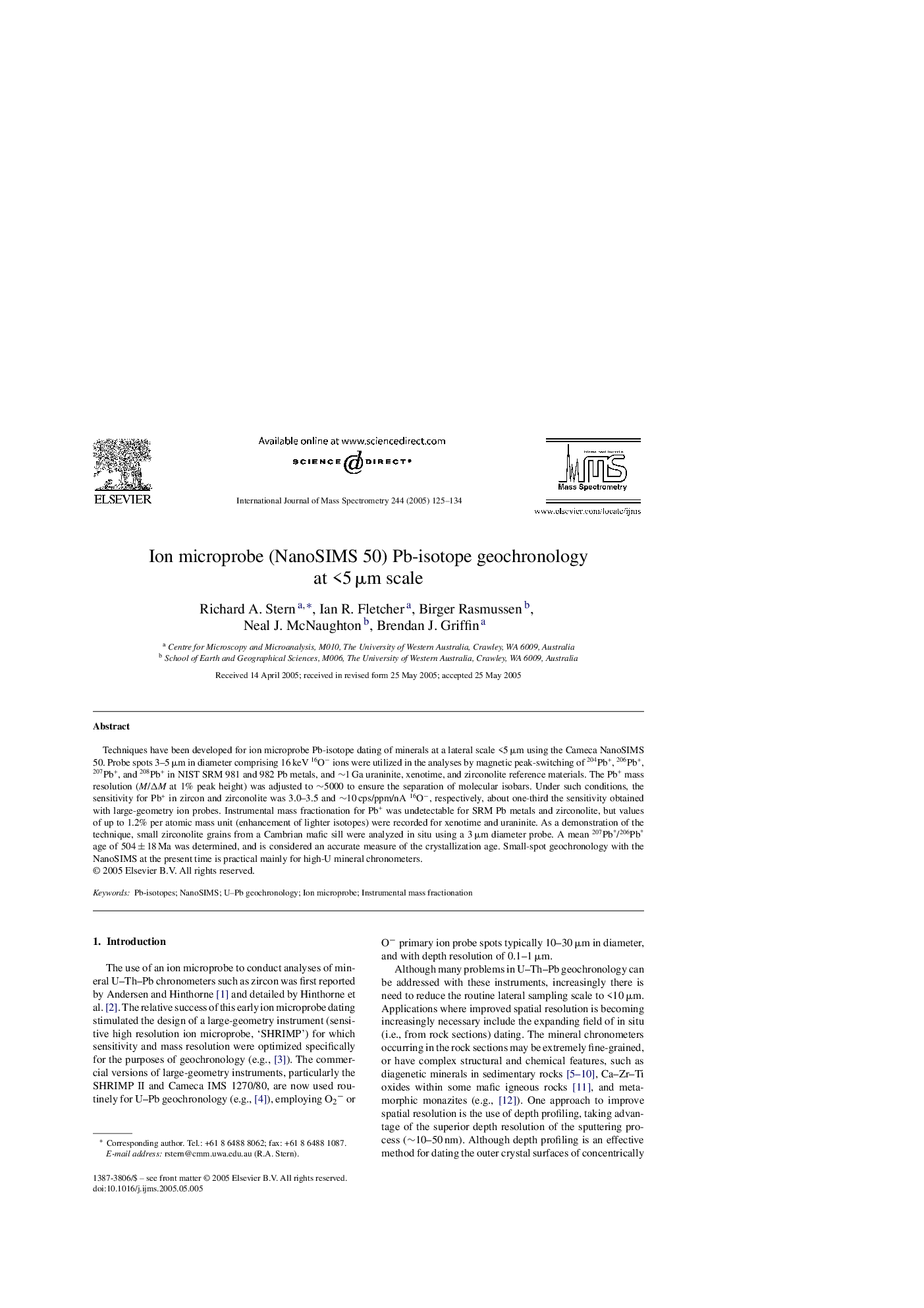| Article ID | Journal | Published Year | Pages | File Type |
|---|---|---|---|---|
| 9746643 | International Journal of Mass Spectrometry | 2005 | 10 Pages |
Abstract
Techniques have been developed for ion microprobe Pb-isotope dating of minerals at a lateral scale <5 μm using the Cameca NanoSIMS 50. Probe spots 3-5 μm in diameter comprising 16 keV 16Oâ ions were utilized in the analyses by magnetic peak-switching of 204Pb+, 206Pb+, 207Pb+, and 208Pb+ in NIST SRM 981 and 982 Pb metals, and â¼1 Ga uraninite, xenotime, and zirconolite reference materials. The Pb+ mass resolution (M/ÎM at 1% peak height) was adjusted to â¼5000 to ensure the separation of molecular isobars. Under such conditions, the sensitivity for Pb+ in zircon and zirconolite was 3.0-3.5 and â¼10 cps/ppm/nA 16Oâ, respectively, about one-third the sensitivity obtained with large-geometry ion probes. Instrumental mass fractionation for Pb+ was undetectable for SRM Pb metals and zirconolite, but values of up to 1.2% per atomic mass unit (enhancement of lighter isotopes) were recorded for xenotime and uraninite. As a demonstration of the technique, small zirconolite grains from a Cambrian mafic sill were analyzed in situ using a 3 μm diameter probe. A mean 207Pb*/206Pb* age of 504 ± 18 Ma was determined, and is considered an accurate measure of the crystallization age. Small-spot geochronology with the NanoSIMS at the present time is practical mainly for high-U mineral chronometers.
Related Topics
Physical Sciences and Engineering
Chemistry
Analytical Chemistry
Authors
Richard A. Stern, Ian R. Fletcher, Birger Rasmussen, Neal J. McNaughton, Brendan J. Griffin,
